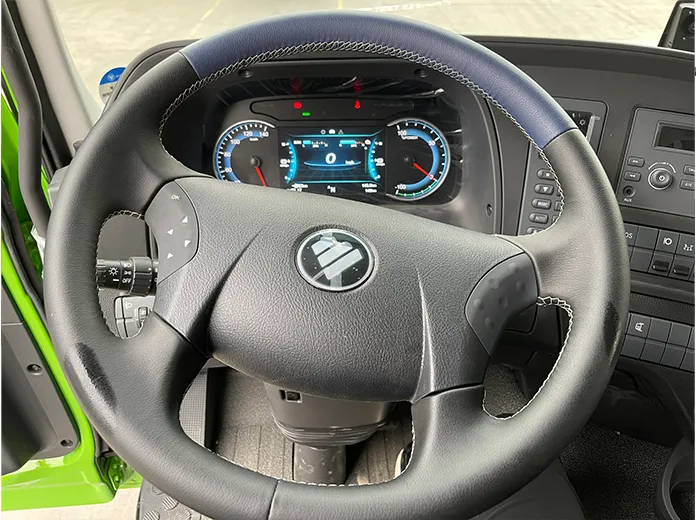engine manifold
Understanding Engine Manifolds Essential Components of Automotive Engineering
The engine manifold is a critical component in modern internal combustion engines, playing a pivotal role in the performance and efficiency of vehicles. This article aims to delve into the intricacies of engine manifolds, their types, functions, and the pivotal role they play in the automotive industry.
What is an Engine Manifold?
An engine manifold serves as a conduit that directs air and fuel to the engine cylinders. It can be broadly categorized into two types the intake manifold and the exhaust manifold. The intake manifold draws in the air-fuel mixture from the throttle body and distributes it to the engine cylinders. Conversely, the exhaust manifold collects the exhaust gases produced during combustion and channels them away from the engine.
Intake Manifolds Functionality and Design
The intake manifold's design significantly influences engine performance. It is engineered to optimize airflow to the cylinders, which can enhance power output and fuel efficiency. Modern intake manifolds are often made from lightweight materials like plastic or aluminum, reducing overall vehicle weight while withstanding high temperatures and pressure.
The design of the intake manifold also plays a crucial role in the phenomenon known as tuning. Engineers utilize principles of fluid dynamics to engineer manifolds that enhance the velocity of the air-fuel mixture entering the cylinders. This tuning can be crucial for achieving peak performance at various engine speeds, ensuring that the vehicle operates optimally under different driving conditions.
Exhaust Manifolds The Pathway for Emissions
On the flip side, the exhaust manifold must efficiently collect and expel exhaust gases. An effective exhaust manifold reduces backpressure and improves the engine's overall efficiency. High-performance vehicles often sport performance-oriented exhaust manifolds that are designed to maximize exhaust flow and improve engine response. Like their intake counterparts, exhaust manifolds can also be constructed from materials that withstand high heat, with stainless steel and cast iron being common choices.
engine manifold

Modern Innovations Variable Intake Manifolds
Advancements in automotive technology have led to the introduction of variable intake manifolds. These systems adjust the length and cross-section of the intake passages based on engine speed, improving performance across a broader range of operating conditions. By adapting the manifold's geometry, engineers can optimize airflow, enhancing both power and efficiency.
The Role of Manifolds in Emissions Control
With stricter emissions regulations globally, the design of engine manifolds is also evolving to meet these demands. Exhaust manifolds are often equipped with integrated technologies such as catalytic converters, which help reduce harmful emissions. Moreover, precise tuning of the intake manifold can improve combustion efficiency, leading to lower emissions levels.
Challenges and Future Developments
Despite advancements, engine manifolds face challenges, particularly regarding heat management and material fatigue. Over time, exposure to extreme temperatures and corrosive exhaust gases can lead to wear and tear, necessitating innovations in material science. Research is ongoing into advanced composites and coatings that can improve the durability and performance of manifolds.
The future of engine manifolds may also be influenced by the shift towards electric and hybrid vehicles. As automotive engineering continues to evolve, the role of traditional engine components may change. Nonetheless, understanding the fundamental principles of intake and exhaust manifolds remains crucial for grasping how internal combustion engines function.
Conclusion
In summary, engine manifolds are integral components to the functionality and performance of internal combustion engines. Understanding their design and operation is essential for anyone interested in automotive engineering. As technology continues to advance, the evolution of manifolds will play a significant role in shaping the future of vehicle performance, efficiency, and environmental compliance. Whether you're an automotive enthusiast or a layman, appreciating the complexities behind engine manifolds enriches our understanding of the vehicles we drive daily.
-
Hydraulic Lock Assembly for SHACMAN Truck Parts – Durable & ReliableNewsJul.28,2025
-
SINOTRUK HOWO 84 Electric Dump Truck for Eco-Friendly Heavy HaulingNewsJul.26,2025
-
The Fast 16-Gear Manual Transmission Assembly for Heavy TrucksNewsJul.25,2025
-
Mercedes Benz Actros 1848 42 Tractor Truck for Sale - Reliable PerformanceNewsJul.24,2025
-
High-Quality Water Pump Assembly for Sinotruk Trucks – Durable & ReliableNewsJul.23,2025
-
Premium Truck Engine Antifreeze Coolant Fluid for Heavy Duty VehiclesNewsJul.22,2025
Popular products

























